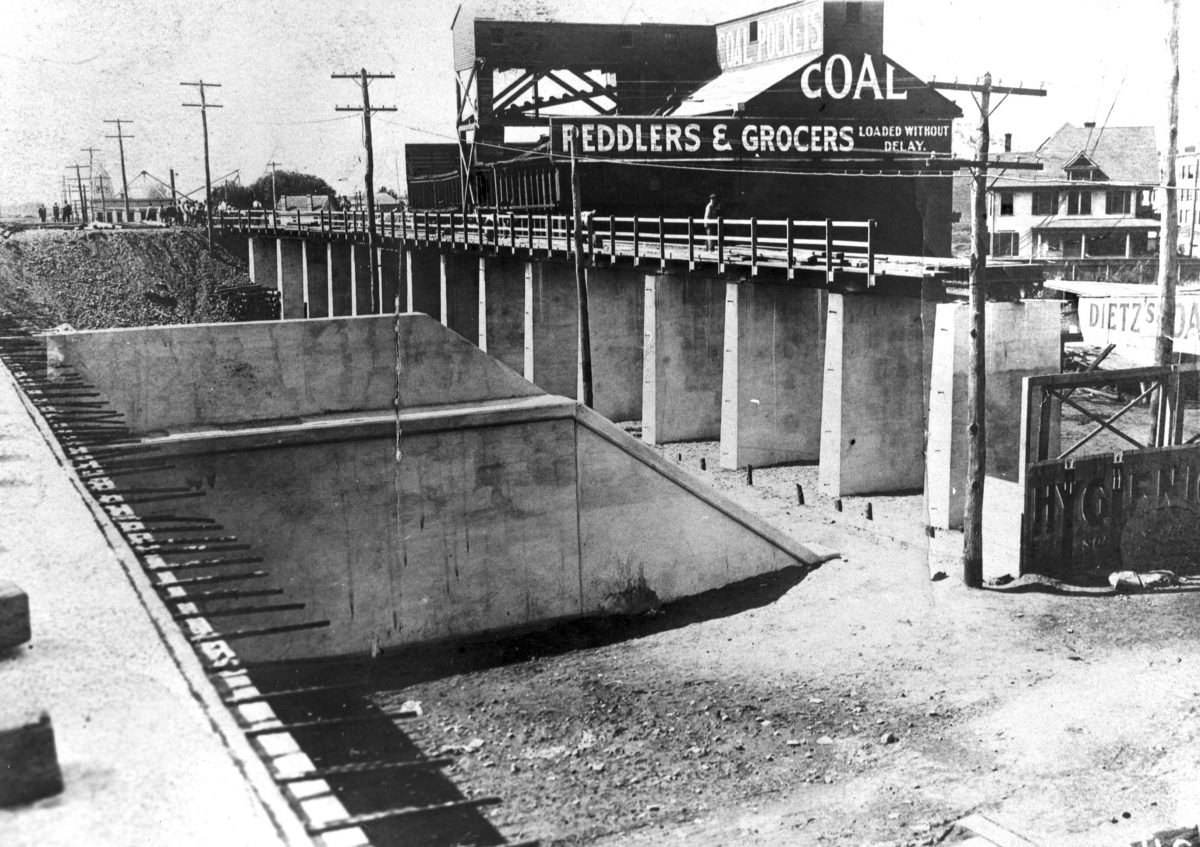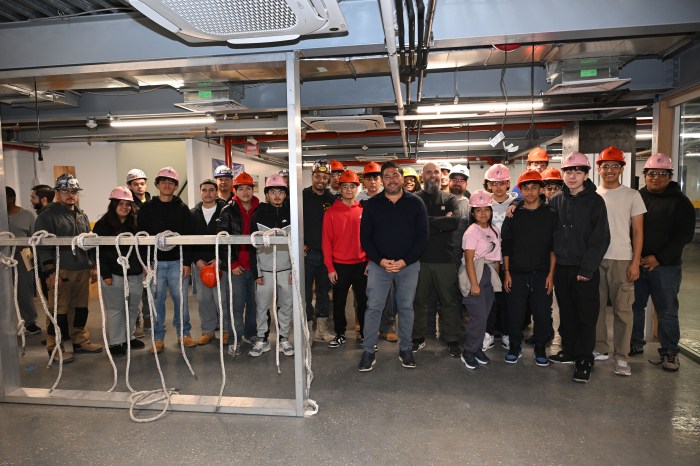Until the late 19th century, homes in the Ridgewood area stored vegetables, fruits and cured or smoked meats in cold cellars. A few homes had refrigerators (ice boxes) but ice was expensive because of the distance it had to be hauled, and the expense of storing it for many months before it was delivered to the eventual user.
Although today we know a refrigerator as an electric powered insulated container used for storing food and other perishable products, originally a refrigerator used ice to lower the temperature.
During the winter months in upper New York state and New England, there was an ice industry where men using large saws cut blocks of natural ice from frozen lakes and rivers, and stored it in pine sawdust in thick insulated wall warehouses. The ice was then shipped during the warmer months to industries such as brewers and dairies where ice was needed to cool their products.
About 1858, Ferdinand Carre of France invented the modern ammonia absorption process of producing artificial ice, which gradually was adopted by industry — initially by breweries and then by other industries. By the 1880s, the manufacture of artificial ice was growing, and by 1900, it had substantially reduced the volume of natural ice that was shipped in commerce.
One of the local suppliers of artificial ice was Philip Dietz, who had originally operated a dairy and then, in 1905, switched to selling coal and wood. In 1911, he expanded his business by installing artificial ice making machinery with a capacity of 82 long tons per day. His plant was located on the west side of Fresh Pond Road (now Cypress Hills Street) and Van Cortlandt Avenue (now 71st Avenue) in Ridgewood.
The ice was produced in 320 pound cakes (7 cakes per long ton). It was then sold to route men for $3 per ton. Many of these route men were Italian immigrants who came with their horse-drawn open wagons to pick up cakes of ice. They then made the rounds in Ridgewood and the surrounding area on dirt side roads.
The route men cut the 320-pound ice cakes into eight, 40-pound pieces sold at 10 cents each and made a profit of $2.60 per ton. They earned every penny, as it was hard work — especially during the summer.
During the hot summer months, as the ice man made his rounds, the horse pulled his open wagon with the cakes of ice covered in a heavy canvas to prevent melting. When he arrived at the home of one of his customers, he would remove the canvas from the ice, and then — using his ice pick — would chop the cake of ice to obtain the size piece he knew the customer wanted.
When the ice man cut the ice, usually the local children would gather around the back of the wagon to pick up slivers of ice from the bottom of the wagon, then suck on them. The ice slivers proved to be a delight during the dog days of summer.
The ice man then used his ice tongs and a burlap cloth to haul the piece of ice from his wagon to his house. In some homes, he entered the basement and went to the dumbwaiter, where a metal dishpan was placed awaiting the ice.
Upon placing the ice in the pan, the customer would haul the ice up and place it in the ice box. Generally, a customer would order a piece of ice every other day; during the winter, the orders were usually twice per week because of the colder weather.
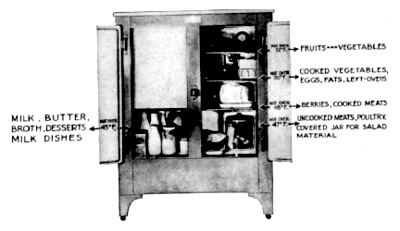
In March 1916, Philip Dietz’s ice business outstripped his capacity. He installed additional machinery to produce another 75 tons per day, bringing his total capacity to 1,100 ice cakes (each weighing 320 pounds) a day, with a storage capacity of 10,000 cakes.
In November 1916, another local company entered the ice-making business: the Glendale Consumers Ice Company, led by president Henry Burkhardt, vice president John Frank and secretary Herman Wolfe. They established their plant at Cooper Avenue and Railroad Avenue (now 70th Avenue) in Glendale, close to the now-defunct Glendale Long Island Rail Road station. They made their ice using electricity rather than coal so the ice would be pure and clean.
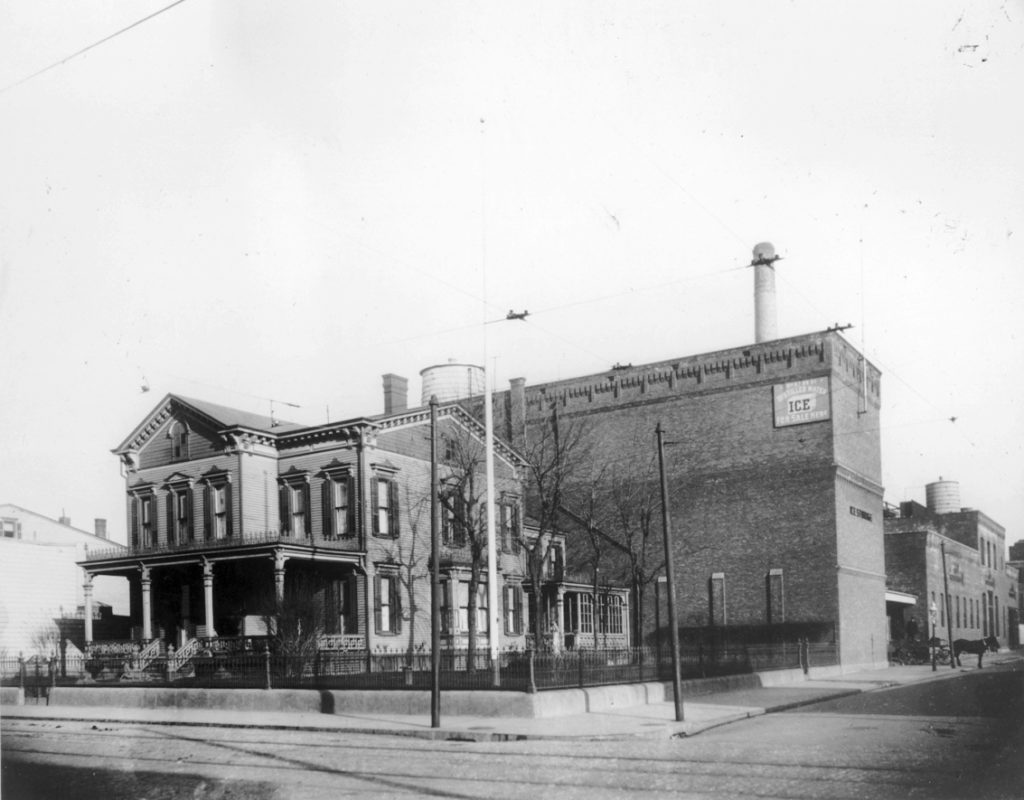
In 1917, under the pressure from inflation that resulted from World War I, wages were increasing. The ice companies increased the wholesale price of ice to the route men to $4 per ton. In turn, the route men increased their prices from 10 cents per 40-pound ice block to 14 cents. They now made a profit of $3.84 per ton.
In the 1930s, General Electric introduced an electric refrigerator that had a large cooling coil on top. The gas utility companies quickly banded together and invented a gas refrigerator sold under the “Electrolux” label; these refrigerators required a gas pipe connection.
Gradually, the performance of electric refrigerators were improved, and the gas refrigerator faded from the scene — as did the ice box and the ice man, both victims of progress.
The Dietz Coal Company, however, remained profitable through the mid-1950s, as it was one of the city’s largest coal suppliers. The company serviced homes and businesses still heated with coal stoves and boilers.
But after the 1950s, business started to wane as those same homes and businesses converted to other, cleaner fuel sources such as home heating oil and natural gas. Dietz Coal soon went out of business, and its land and site were redeveloped into the Glenridge Mews condominium complex in the 1980s.
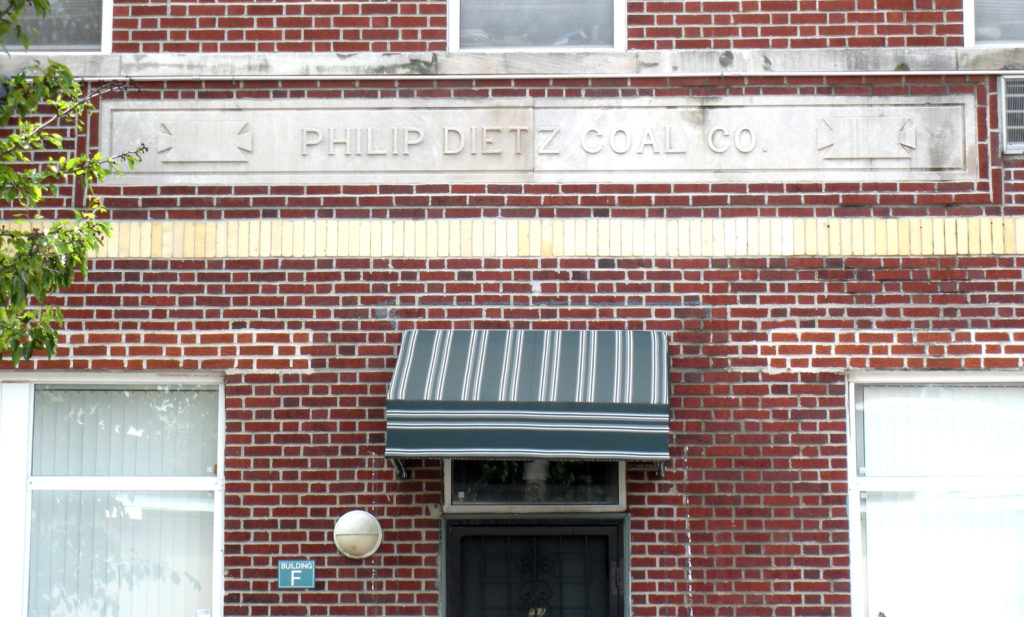
Sources: The Sept. 29, 1983, issue of the Ridgewood Times and “If You’re Thinking of Living in Ridgewood,” New York Times, March 24, 1985.
* * *
If you have any remembrances or old photographs of “Our Neighborhood: The Way It Was” that you would like to share with our readers, please write to the Old Timer, c/o Ridgewood Times, 38-15 Bell Blvd., Bayside, NY 11361, or send an email to editorial@ridgewoodtimes.com. Any print photographs mailed to us will be carefully returned to you upon request.

